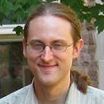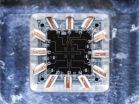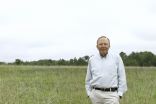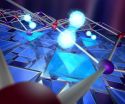INFORMATION:
http://www.miami.edu/news
The University of Miami's mission is to educate and nurture students, to create knowledge, and to provide service to our community and beyond. Committed to excellence and proud of our diversity of our University family, we strive to develop future leaders of our nation and the world.
Fighting crime through crowdsourcing
University of Miami researchers are developing a computing model that uses crowdsourcing to combine and optimize human efforts and machine computing, to perform complex tasks
2014-11-12
(Press-News.org) CORAL GABLES, Fla. (Nov. 12, 2014) -- Crowdsourcing utilizes the input of a crowd of online users to collaboratively solve problems. To advance this emerging technology, researchers at the University of Miami are developing a computing model that uses crowdsourcing to combine and optimize human efforts and machine computing elements.
The new model can be used to efficiently perform the complex tasks of face recognition--a method used in law enforcement. It's a new approach to using social networks as a formal part of the criminal investigation process, explained computer scientist Brian Blake, vice provost for Academic Affairs and dean of the Graduate School at the University of Miami (UM). He is also principal investigator of the project.
"The breadth of the internet and popularity of smartphones have facilitated the onset of online crowdsourcing platforms," Blake said. "Our project attempts to leverage the power of the crowd to solve complex problems, on demand."
Preliminary findings showed an average certainty of 14.13% for machine computing elements (MCE) to identify individuals in pictures. Combining the efforts of both MCE and human computing elements (HCE) in performing the same task, there was an average increase of 55% reflecting in an overall mean precision of 69.13%.
Unlike previous works, where machines and humans would address distinct tasks, the current project is unique in that the investigators recognize that sometimes the jobs requiring human and/or machine interventions are exactly the same. Traditionally, in a criminal investigation, a workflow might use computers to sort pictures and information, then use the people to identify pictures of interest. In the current approach, people and machines could sort the images, simultaneously and people and machines could identify the images. The open problem is who does what and in which order.
The elasticity of the system is the key feature of the model. It allows it to adapt to changes in the workload of a task. The new model allows the machine and human computing resources to change, when and where needed and without disrupting the operations.
"Elastically, we would like to decide who is best for a specific task, or what concentration of people or machines could be mixed for a specific task," Blake said. "We also think that humans could do a first pass of a task, then machines do a second pass on the same task."
The model combines the human and machine computing elements and ignores specific outputs that don't meet certain quality requirements. It also sends feedback to improve future decisions. This feedback allows the model to build a knowledge base to improve accuracy.
The preliminary results of this study were presented at the 10th IEEE International Conference on Collaborative Computing: Networking, Applications and Worksharing, where Blake gave the opening keynote address. The findings will be published by IEEE press in a paper titled: "Combining Human and Machine Computing Elements for Analysis via Crowdsourcing."
The publication was led by Julian Jarrett, Ph.D. student, and Iman Saleh, research scientist working in Blake's lab, in the UM College of Arts & Sciences Department of Computer Science. where Blake is also a professor. Other co-authors are Rohan Malcom and Sean Thorpe, from the University of Technology in Jamaica; and Tyrone Grandison, from Proficiency Labs in Ashland, Oregon.
In the future, the researchers would like to recreate specific past events or create a simulated event, with a staged "bad guy," where hundreds of people use their cell phones to take pictures, then use all the pictures and personal accounts, to test the new model.
ELSE PRESS RELEASES FROM THIS DATE:
Hope for those with social anxiety disorder: You may already be someone's best friend
2014-11-12
Making friends is often extremely difficult for people with social anxiety disorder and to make matters worse, people with this disorder tend to assume that the friendships they do have are not of the highest quality.
The problem with this perception, suggests new research from Washington University in St. Louis, is that it's not necessarily true from the point of view of their friends.
"People who are impaired by high social anxiety typically think they are coming across much worse than they really are," said study co-author Thomas Rodebaugh, PhD, associate professor ...
A piece of the quantum puzzle
2014-11-12
While the Martinis Lab at UC Santa Barbara has been focusing on quantum computation, former postdoctoral fellow Pedram Roushan and several colleagues have been exploring qubits (quantum bits) for quantum simulation on a smaller scale. Their research appears in the current edition of the journal Nature.
"While we're waiting on quantum computers, there are specific problems from various fields ranging from chemistry to condensed matter that we can address systematically with superconducting qubits," said Roushan, who is now a quantum electronics engineer at Google. "These ...
Moving cameras talk to each other to identify, track pedestrians
2014-11-12
It's not uncommon to see cameras mounted on store ceilings, propped up in public places or placed inside subways, buses and even on the dashboards of cars.
Cameras record our world down to the second. This can be a powerful surveillance tool on the roads and in buildings, but it's surprisingly hard to sift through vast amounts of visual data to find pertinent information - namely, making a split-second identification and understanding a person's actions and behaviors as recorded sequentially by cameras in a variety of locations.
Now, University of Washington electrical ...
Primordial galaxy bursts with starry births
2014-11-12
ITHACA, N.Y. - Peering deep into time with one of the world's newest, most sophisticated telescopes, astronomers have found a galaxy - AzTEC-3 - that gives birth annually to 500 times the number of suns as the Milky Way galaxy, according to a new Cornell University-led study published Nov. 10 in the Astrophysical Journal.
Lead author Dominik Riechers, Cornell assistant professor of astronomy, and an international team of researchers gazed back - with the Atacama Large Millimeter/submillimeter Array (ALMA) in Chile - over 12.5 billion years to find bustling galaxies creating ...
Research suggests how mosquitoes evolved an attraction to human scent
2014-11-12
New York, NY - The female mosquitoes that spread dengue and yellow fever didn't always rely on human blood to nourish their eggs. Their ancestors fed on furrier animals in the forest. But then, thousands of years ago, some of these bloodsuckers made a smart switch: They began biting humans and hitchhiked all over the globe, spreading disease in their wake.
"It was a really good evolutionary move," says Leslie B. Vosshall, the Robin Chemers Neustein Professor and head of the Laboratory of Neurogenetics and Behavior at The Rockefeller University, and a Howard Hughes Medical ...
Live longer? Save the planet? Better diet could nail both
2014-11-12
As cities and incomes increase around the world, so does consumption of refined sugars, refined fats, oils and resource- and land-intense agricultural products such as beef. A new study led by University of Minnesota ecologist David Tilman shows how a shift away from this trajectory and toward healthier traditional Mediterranean, pescatarian or vegetarian diets could not only boost human lifespan and quality of life, but also slash greenhouse gas emissions and save habitat for endangered species.
The study, published in the November 12 online edition of Nature by Tilman ...
Study at SLAC explains atomic action in high-temperature superconductors
2014-11-12
Menlo Park, Calif. -- A study at the Department of Energy's SLAC National Accelerator Laboratory suggests for the first time how scientists might deliberately engineer superconductors that work at higher temperatures.
In their report, a team led by SLAC and Stanford University researchers explains why a thin layer of iron selenide superconducts -- carries electricity with 100 percent efficiency -- at much higher temperatures when placed atop another material, which is called STO for its main ingredients strontium, titanium and oxygen.
These findings, described today ...
Shaking the topological cocktail of success
2014-11-12
Graphene is the miracle material of the future. Consisting of a single layer of carbon atoms arranged in a honeycomb lattice, the material is extremely stable, flexible, highly conductive and of particular interest for electronic applications. ETH Professor Tilman Esslinger and his group at the Institute for Quantum Electronics investigate artificial graphene; its honeycomb structure consists not of atoms, but rather of light. The researchers align multiple laser beams in such a way that they create standing waves with a hexagonal pattern. This optical lattice is then superimposed ...
Jackson Laboratory researchers discover lung regeneration mechanism
2014-11-12
A research team led by Jackson Laboratory Professors Frank McKeon, Ph.D., and Wa Xian, Ph.D., reports on the role of certain lung stem cells in regenerating lungs damaged by disease.
The work, published Nov. 12 in the journal Nature, sheds light on the inner workings of the still-emerging concept of lung regeneration and points to potential therapeutic strategies that harness these lung stem cells.
"The idea that the lung can regenerate has been slow to take hold in the biomedical research community," McKeon says, "in part because of the steady decline that is seen ...
Brain protein influences how the brain manages stress; suggests new model of depression
2014-11-12
The brain's ability to effectively deal with stress or to lack that ability and be more susceptible to depression, depends on a single protein type in each person's brain, according to a study conducted at the Icahn School of Medicine at Mount Sinai and published November 12 in the journal Nature.
The Mount Sinai study findings challenge the current thinking about depression and the drugs currently used to treat the disorder.
"Our findings are distinct from serotonin and other neurotransmitters previously implicated in depression or resilience against it," says the ...
LAST 30 PRESS RELEASES:
Be careful trusting TikTok for gout advice
A study by the University of Seville links the vanishing of the specific heats at absolute zero with the principle of entropy increase
Anxiety and insomnia may lower natural killer cell count, potentially repressing immune function
How parasitic, asexual plants evolve and live
Research spotlight: A subset of patients with depression could benefit from anti-inflammatory treatment
New fully digital design paves the way for scalable probabilistic computing
Membrane electrode assembly design for high-efficiency anion exchange membrane water electrolysis
U.S. debt ceiling disputes show measurable impact on global crude oil markets
Climate extremes triggered rare coral disease and mass mortality on the Great Barrier Reef
Direct observation reveals “two-in-one” roles of plasma turbulence
Humans rank between meerkats and beavers in monogamy ‘league table’
US fossil reveals early mass-burial event and ancient microbial attack
Sedative choice could improve outcomes for breathing tube patients
New superconducting thin film for quantum computer chips
Simulations reveal protein "dynamin" constricts cell membranes by loosening its grip
Nearly 1 in 5 UK emergency department patients cared for in corridors/waiting rooms
Heavy energy drink intake may pose serious stroke risk, doctors warn
Violence against women and children among top health threats: New global study reveals disease burden far larger than previously estimated
Predicting who is at risk of developing type 1 diabetes, as new drugs now available
New gene-mapping method unlocks hidden drivers of cancer
Ocean current and seabed shape influence warm water circulation under ice shelves
Call to increase funding for ‘invisible’ Deaf victim-survivors of domestic abuse
University of Maryland School of Medicine names distinguished scientist and academic leader Gerald M. Wilson, PhD, as Chair of the Department of Biochemistry and Molecular Biology
Receptors in mammary glands make livestock and humans inviting hosts for avian flu
Icy hot plasmas
Treating adults with autism: Maryland Clinical Center offers national blueprint for care after pediatric transition
University of Phoenix College of Doctoral Studies releases white paper on reclaiming control to build workforce resilience
NCCN Summit seeks to improve care for veterans and first responders with cancer from line-of-duty exposure
ERC Consolidator Grant for soft robotics researcher
Dual-action arts and wellbeing program transforms dementia care
[Press-News.org] Fighting crime through crowdsourcingUniversity of Miami researchers are developing a computing model that uses crowdsourcing to combine and optimize human efforts and machine computing, to perform complex tasks




